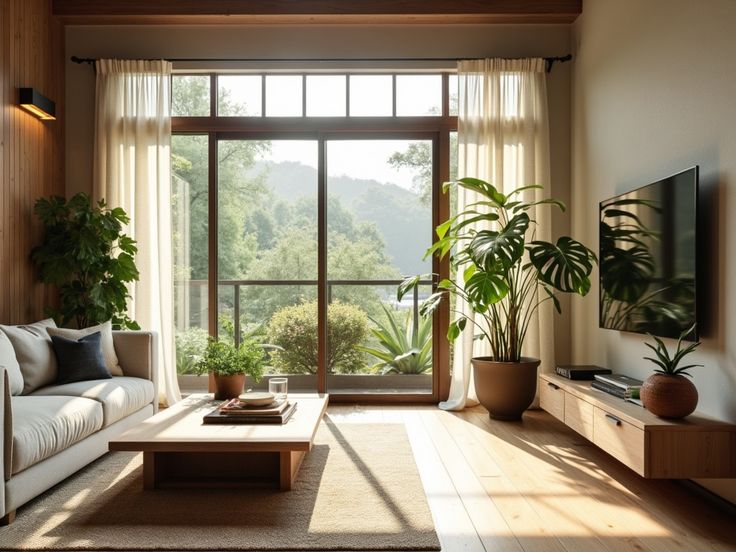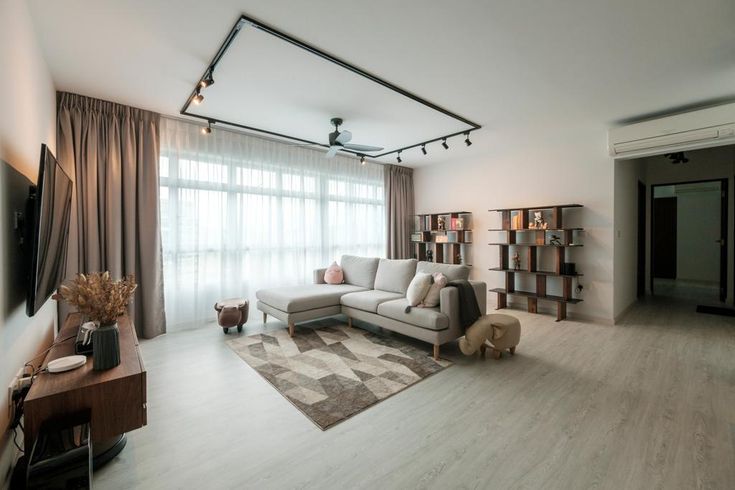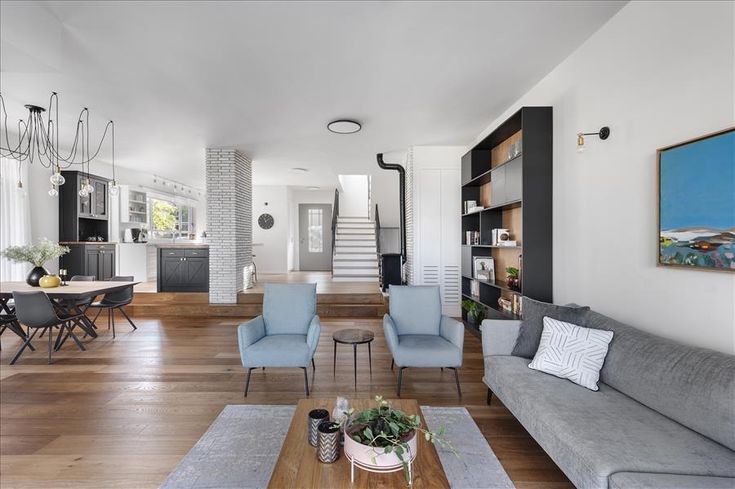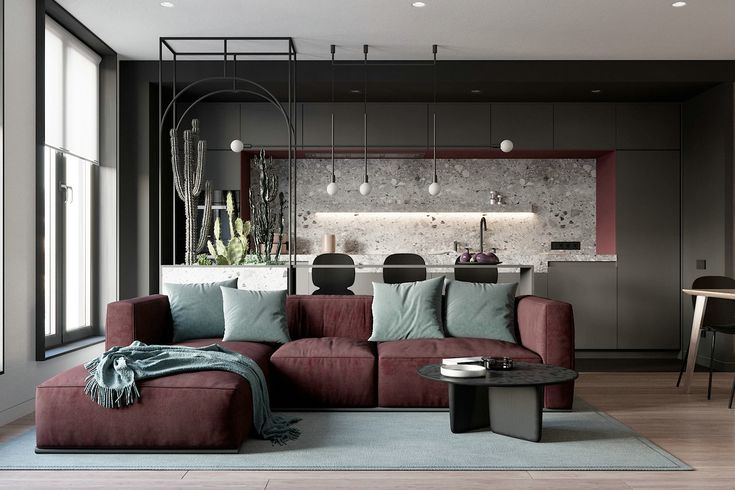Minimalist vs. Maximalist Interior Design: Finding Beauty in Simplicity or Bold Expression
Minimalist vs. Maximalist Interior Design: Finding Beauty in Simplicity or Bold Expression – In today’s dynamic world of interior design, homeowners and designers alike are often faced with one critical question: should you embrace the sleek, uncluttered aesthetic of minimalism or dive into the vibrant, layered world of maximalism? Both design styles offer unique approaches to creating a space that is visually compelling, yet they differ greatly in philosophy, execution, and emotional impact. In this comprehensive guide, we’ll explore the nuances of minimalist vs. maximalist interior design, examine the benefits and challenges of each, and provide practical tips for implementing these styles in your own home.
Whether you lean toward the serene simplicity of a minimalist interior design or are drawn to the bold expression characteristic of maximalist spaces, understanding the core principles behind each style can help you create an environment that reflects your personality and lifestyle. Let’s embark on this journey to discover how simplicity and boldness can each define beauty in the world of interior design.
Understanding Minimalist Interior Design
Minimalist interior design is more than just a trend—it’s a lifestyle that values simplicity, clarity, and functionality. Rooted in the principle of “less is more,” this design approach focuses on the elimination of unnecessary clutter to create a calm, organized, and aesthetically pleasing space.
History and Philosophy
The minimalist movement began as a reaction against the overly ornate designs of previous eras. Influenced by modern art movements such as minimal art and Bauhaus design, minimalism in interior design emphasizes clean lines, open spaces, and a restrained color palette. The philosophy behind minimalism is not only visual but also practical: it encourages mindful consumption and a focus on quality over quantity. By paring down to the essentials, minimalist design seeks to create environments where every element has a purpose, and the beauty of simplicity is celebrated.
Key Elements of Minimalist Design
- Clean Lines and Simple Forms: Minimalist interiors are characterized by geometric shapes, smooth surfaces, and straight lines. Furniture and architectural details often feature a streamlined look that avoids unnecessary embellishments.
- Neutral Color Palette: Whites, grays, beiges, and other neutral tones dominate minimalist spaces. These colors create a sense of openness and allow natural light to reflect and enhance the spatial quality of the room.
- Open Space: Minimalist design thrives on the concept of negative space—the intentional use of empty areas to create balance and highlight the few selected design elements.
- Quality Over Quantity: In minimalist interiors, every item is chosen carefully. Whether it’s a piece of furniture, an artwork, or a decorative object, each element should contribute to the overall harmony of the space.
- Functional and Multi-purpose Pieces: Furniture in minimalist interiors is often designed with functionality in mind. Multi-purpose pieces that blend seamlessly with the décor help maintain an uncluttered environment.
Benefits of Minimalist Interior Design
- Calm and Clarity: The simplicity of minimalist spaces can evoke a sense of calm and mental clarity, making them ideal for stress-free living and relaxation.
- Easier Maintenance: With fewer items to clean and organize, minimalist interiors tend to be easier to maintain, saving time and effort in daily upkeep.
- Timeless Appeal: The clean lines and neutral palette of minimalist design have a timeless quality, ensuring that your space will remain stylish and relevant for years to come.
- Enhanced Functionality: By eliminating excess clutter, minimalist spaces can become more functional and user-friendly, catering to modern lifestyles that value efficiency and order.
Challenges and Considerations
- Perceived Coldness: Some critics argue that minimalist spaces can feel impersonal or sterile if not executed with care. The key is to incorporate warmth through textures, natural materials, or a few well-chosen accent pieces.
- Initial Investment: High-quality, minimalist furnishings and decor can be expensive, as the philosophy of “less is more” often means investing in superior design and craftsmanship.
- Maintenance of Simplicity: While minimalism makes cleaning easier, it also requires a commitment to keeping clutter at bay. This lifestyle demands regular curation and mindfulness about what items enter your space.
Inspiring Minimalist Interior Design Ideas
- Open Floor Plans: Emphasize natural light and airiness by opting for open floor plans that minimize unnecessary partitions.
- Statement Pieces: Use a single, eye-catching piece of art or furniture as a focal point to draw attention without overwhelming the space.
- Natural Elements: Incorporate organic textures such as wood, stone, and linen to add warmth and contrast to the simplicity of the design.
- Hidden Storage: Utilize clever storage solutions that hide clutter, ensuring that only the essentials are visible.

Exploring Maximalist Interior Design
Maximalist interior design is the bold and expressive counterpoint to minimalism. It celebrates abundance, diversity, and the beauty of personal expression through layers of color, texture, and eclectic patterns. Rather than stripping a space down to its bare essentials, maximalism invites you to fill it with art, memories, and vibrant details.
History and Philosophy
Maximalism as a design philosophy emerged as a reaction to minimalism’s restraint. It embraces the idea that more is more—each object, color, and texture adds depth and personality to a space. This style draws inspiration from various cultures, historical periods, and artistic movements, merging them into a cohesive yet eclectic aesthetic. Maximalism is about storytelling; every piece in the room contributes to a narrative that is uniquely personal and visually stimulating.
Key Elements of Maximalist Design
- Vibrant Color Palettes: Unlike the neutral tones of minimalism, maximalist interiors are characterized by bold, rich hues. Bright colors, deep contrasts, and unexpected color combinations are common.
- Pattern Overload: From floral wallpapers to geometric tiles, maximalist design often features a mix of patterns. The key is to balance these elements so that they create a harmonious yet dynamic visual experience.
- Layered Textures: Incorporating a variety of textures—such as plush fabrics, metallic accents, and vintage materials—adds depth and tactile interest to a maximalist space.
- Eclectic Collections: Maximalist interiors are perfect for displaying collections, whether it’s art, antiques, or personal memorabilia. Each object has a story and contributes to the overall aesthetic.
- Ornate Details: Decorative elements like intricate moldings, patterned rugs, and statement lighting fixtures are common in maximalist design, providing a rich sensory experience.
Benefits of Maximalist Interior Design
- Personal Expression: Maximalism allows for a high degree of personalization. Your space can become a canvas for your interests, passions, and experiences.
- Visual Excitement: The abundance of colors, patterns, and textures in maximalist design creates an engaging, dynamic environment that stimulates creativity and conversation.
- Flexibility and Layering: Maximalist interiors are inherently flexible. Layers of decor can be added or removed over time, allowing your space to evolve with your tastes and experiences.
- Cultural Richness: By incorporating elements from various cultures and historical periods, maximalist design can evoke a sense of global connectivity and timelessness.
Challenges and Considerations
- Risk of Overcrowding: One of the primary challenges of maximalist design is ensuring that the space doesn’t feel overwhelming. Achieving a balance between abundance and cohesion is crucial.
- Maintenance: With more objects and decorative elements comes a greater need for upkeep. Keeping a maximalist space organized and dust-free can be a challenge.
- Design Cohesion: When mixing diverse elements, there’s always a risk that the overall design might appear disjointed. The key is to find common threads—whether it’s a recurring color, pattern, or theme—that tie the elements together.
Inspiring Maximalist Interior Design Ideas
- Gallery Walls: Create a striking gallery wall that combines artwork, photographs, and mementos to tell a visual story.
- Layered Lighting: Mix and match lighting sources, such as chandeliers, floor lamps, and table lamps, to create a rich, layered ambiance.
- Mix of Eras: Blend modern furniture with vintage or antique pieces to create a dynamic contrast that reflects your personal journey.
- Bold Accent Walls: Use wallpaper or bold paint colors on a single wall to serve as a dramatic focal point in the room.
- Textural Contrasts: Experiment with different materials—velvet, leather, silk, and metal—to add depth and tactile variety to your space.
Minimalist vs. Maximalist Interior Design: A Comparative Analysis
Now that we’ve explored the defining features of both minimalist and maximalist interior design, it’s time to put them side by side and examine how they differ in aesthetics, functionality, and overall impact on our living spaces.
Aesthetic Differences
- Minimalist Aesthetics: Minimalist design is defined by its simplicity, using a neutral color palette, clean lines, and a focus on functionality. The aesthetic is calm, orderly, and emphasizes open space and light. Every element is carefully selected to contribute to a sense of balance and tranquility.
- Maximalist Aesthetics: Maximalist design, on the other hand, embraces abundance. It utilizes a wide range of colors, patterns, and textures to create a layered, vibrant look. The aesthetic is rich, eclectic, and often quite bold, reflecting a personality that is unafraid to mix and match.
Functional Considerations
- Minimalist Functionality: In minimalist interiors, function is at the forefront. Each piece of furniture or decor is chosen for its utility and contribution to the overall design. This approach often results in easier maintenance and a space that feels more organized.
- Maximalist Functionality: While maximalist design might appear to be all about aesthetics, it also serves a functional role by showcasing the owner’s personality and history. However, the emphasis on display can sometimes come at the cost of practicality, requiring more effort to keep the space organized and cohesive.
Budget and Maintenance
- Budget Considerations: Minimalist design can be both a cost-saving and a high-investment choice. Although fewer items are needed, the focus on quality means that each piece may come with a higher price tag. Conversely, maximalist design might start with a mix of budget-friendly items alongside splurges on statement pieces.
- Maintenance: Maintaining a minimalist space is generally simpler due to fewer objects to clean and organize. In contrast, a maximalist interior may require more time and effort to maintain its curated look, with regular decluttering and cleaning routines.
Personality Expression
- Minimalist Expression: Minimalist interiors appeal to those who appreciate order, clarity, and a sense of calm. This design style works well for individuals who prefer a quiet, reflective environment and who believe that simplicity fosters creativity.
- Maximalist Expression: For those with a vibrant, eclectic personality, maximalist interiors provide an opportunity to display a wide array of interests and cultural influences. This style is ideal for people who see their home as a living scrapbook of their experiences and passions.
Adaptability and Evolution
- Minimalist Adaptability: The timeless nature of minimalist design means that it can easily adapt to changes in trends and personal tastes. Its focus on essential elements allows for subtle updates without a complete overhaul.
- Maximalist Evolution: Maximalist spaces naturally evolve over time as new pieces are added to the collection. This flexibility means that a maximalist interior can grow and change, reflecting the dynamic nature of its owner’s life.
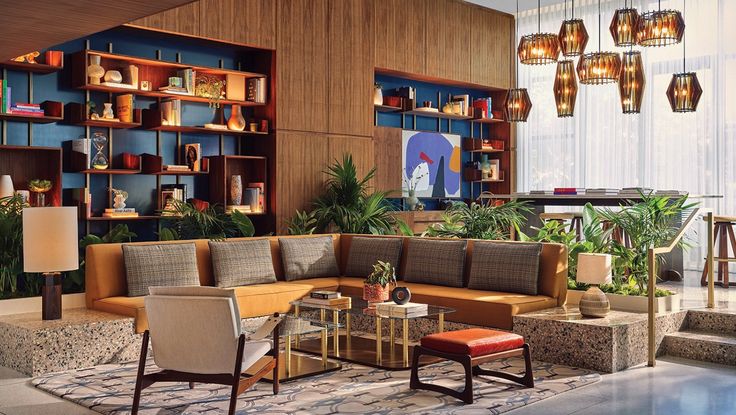
Practical Tips for Implementing Your Chosen Style
Whether you’re leaning toward minimalist simplicity or maximalist boldness. Here are some actionable tips to help you achieve your desired interior design:
For a Minimalist Interior Design
- Declutter Ruthlessly: Begin by removing non-essential items from your space. Keep only what adds value or joy, and invest in smart storage solutions to hide clutter.
- Choose a Neutral Palette: Stick to whites, grays, and muted tones for walls and larger furniture pieces. Use accent colors sparingly to create focal points.
- Emphasize Quality: Invest in fewer, high-quality pieces that will stand the test of time. Look for furniture and decor that offer both functionality and aesthetic appeal.
- Incorporate Natural Elements: Use wood, stone, and greenery to add warmth and texture without overwhelming the space.
- Focus on Lighting: Maximize natural light and incorporate minimalist light fixtures that enhance the clean lines and open space.
For a Maximalist Interior Design
- Embrace Bold Colors: Don’t be afraid to experiment with vibrant hues. Consider using accent walls or statement pieces in colors that resonate with your personality.
- Mix Patterns and Textures: Combine different patterns and textures to create a layered, dynamic look. Balance busy elements with more subdued pieces to prevent the space from feeling chaotic.
- Display Personal Collections: Use shelves, display cases, or gallery walls to showcase your art, books, and treasured memorabilia.
- Layer Lighting: Combine different lighting sources—such as chandeliers, floor lamps, and table lamps. To add depth and create focal points throughout your room.
- Experiment with Eclectic Furnishings: Mix modern pieces with vintage finds. Look for items that tell a story and add character to your space.
Blending Minimalist and Maximalist Elements: Finding Your Unique Style
While many design enthusiasts often view minimalist and maximalist interior design as polar opposites, a growing trend in interior styling is the blending of both aesthetics. This hybrid approach can offer the best of both worlds. The calm and functionality of minimalism combined with the personality and visual intrigue of maximalism.
Tips for a Balanced Blend
- Start with a Minimalist Base: Use a minimalist foundation with a neutral color palette and clean lines as your canvas. This creates a serene background that allows statement pieces to stand out.
- Introduce Bold Accents: Incorporate a few maximalist elements such as vibrant artwork, a patterned rug, or a uniquely designed piece of furniture. These accents can provide the necessary visual stimulation without overwhelming the space.
- Create Focal Points: Choose a single area or wall to act as a gallery or focal point where you can freely express your maximalist tendencies. This allows the rest of the room to remain calm and uncluttered.
- Balance Scale and Proportion: Ensure that the bold elements are balanced by ample negative space. This maintains a sense of order and prevents the design from becoming too busy.
- Curate Thoughtfully: Even when mixing styles, maintain a curated feel. Each piece should be intentional and contribute to a cohesive overall design narrative.
Minimalist vs. Maximalist Interior Design: Which One is Right for You?
Choosing between minimalist and maximalist interior design ultimately depends on your personal taste, lifestyle, and the emotional atmosphere you wish to create in your home. Here are some questions to ask yourself as you decide:
- How do you relate to your living space?
Do you prefer an environment that offers calm and clarity, or do you thrive in a setting that stimulates creativity and conversation? - What is your approach to organization?
Are you someone who enjoys a clean, clutter-free space, or do you see value in a room filled with personal treasures and memories? - How important is functionality versus expression?
If functionality and simplicity are paramount, minimalist interior design might be your ideal choice. However, if you value personal expression and visual storytelling, maximalism could be the perfect fit. - Do you plan on changing your decor frequently?
A maximalist space might offer more flexibility for evolution over time, while a minimalist design tends to be more timeless.
Remember, there’s no right or wrong answer here—both styles have their unique charms, and the best interior design reflects who you are.
Conclusion
The debate between minimalist vs. maximalist interior design is not about choosing the “better” style, but rather about understanding what resonates with your personal vision and lifestyle. Minimalist interiors offer a sanctuary of calm, emphasizing clean lines, functionality, and a refined, neutral palette. In contrast, maximalist interiors celebrate bold expression, personal storytelling, and a rich tapestry of colors, patterns, and textures.
By exploring the history, key elements, benefits, and challenges of both design styles, you can make an informed decision that aligns with your aesthetic preferences and practical needs. Whether you choose the serenity of minimalism, the vibrancy of maximalism, or even a thoughtful blend of the two. Remember that the ultimate goal of interior design is to create a space that feels like home—a true reflection of your identity and aspirations.
In the end, finding beauty in simplicity or bold expression is a deeply personal journey. Embrace the design philosophy that speaks to you, and let your living space be a canvas that evolves with you over time. Happy decorating!
By exploring the nuances of minimalist vs. maximalist interior design, this guide aims to empower you with the insights needed to create a home that not only meets your functional needs but also inspires you daily. Whether you’re drawn to the clean elegance of minimalism or the rich, eclectic layers of maximalism. Your space can be a testament to your personal story and creative vision.


